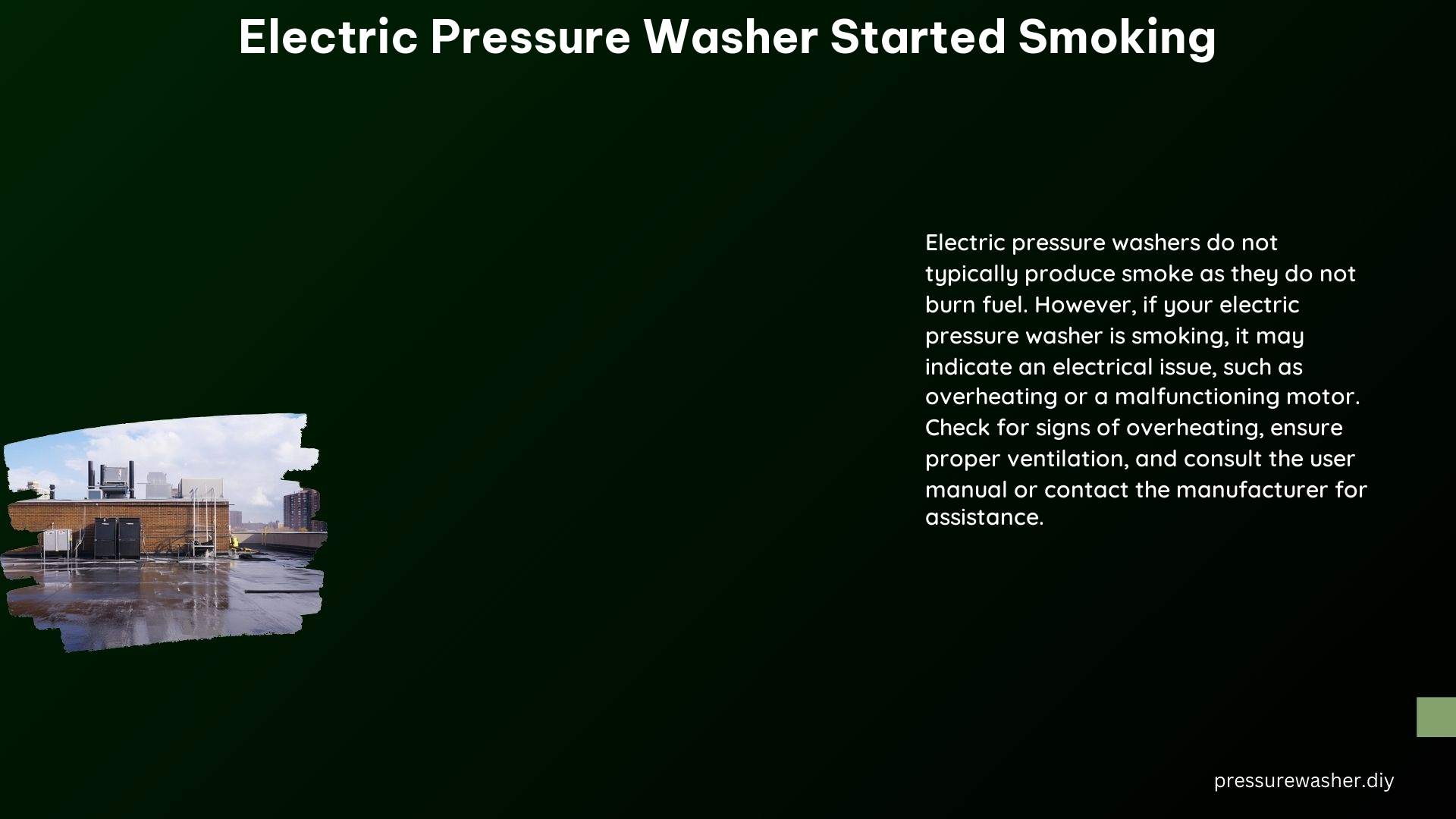If your electric pressure washer has started smoking, it can be a concerning issue that requires immediate attention. This comprehensive guide will delve into the potential causes of smoking in electric pressure washers and provide step-by-step troubleshooting instructions to help you identify and resolve the problem.
Causes of Smoking in Electric Pressure Washers
1. Overheating
Electric pressure washers are designed to operate within specific temperature ranges, and exceeding these limits can lead to overheating, which can cause the motor to smoke. Overheating can occur due to several factors, including:
- Clogged Air Vents: Blocked or obstructed air vents can prevent proper airflow, leading to heat buildup and overheating.
- Malfunctioning Cooling System: If the pressure washer’s cooling system, such as the fan or heat sink, is not functioning correctly, it can cause the motor to overheat.
- Excessive Usage: Prolonged or continuous use of the pressure washer without adequate rest periods can cause the motor to overheat.
2. Electrical Issues
Faulty electrical components within the pressure washer can also lead to smoking. Some common electrical issues include:
- Malfunctioning Capacitor: The capacitor, which helps regulate the motor’s power supply, can fail and cause the motor to smoke.
- Short Circuit: A short circuit in the wiring or other electrical components can generate heat and lead to smoking.
3. Motor Failure
A failing or failed motor can also produce smoke due to internal electrical or mechanical issues. This can be caused by:
- Worn Brushes: In universal motors, the carbon brushes that transfer electricity to the armature can wear down over time, leading to motor failure and smoking.
- Bearing Failure: Worn or damaged bearings can cause the motor to seize up, leading to overheating and smoking.
4. Clogged or Dirty Pumps
The pressure washer’s pump is responsible for drawing in water and delivering it at high pressure. If the pump becomes clogged or excessively dirty, it can cause the motor to work harder, leading to overheating and smoking.
5. Improper Maintenance
Failure to regularly clean and maintain the pressure washer can contribute to various issues, including smoking. Neglecting tasks such as cleaning the air filters, flushing the pump, and lubricating moving parts can lead to problems over time.
Troubleshooting Steps

-
Turn Off the Pressure Washer: Immediately turn off the pressure washer to prevent further damage and potential safety hazards.
-
Check for Overheating: Ensure the pressure washer is in a well-ventilated area and check if the air vents are clogged. Clean the vents using a soft-bristled brush or compressed air to improve airflow and prevent overheating.
-
Inspect Electrical Components: Carefully inspect the electrical components, such as the capacitor, wiring, and connections, for any signs of damage or malfunction. Replace any faulty parts as necessary.
-
Check the Pump: Inspect the pump for any blockages or dirt buildup. Disassemble the pump, if possible, and clean it thoroughly using a suitable cleaning solution. If the pump is severely clogged or damaged, consider replacing it.
-
Consult the User Manual: Refer to the pressure washer’s user manual for specific troubleshooting steps or maintenance procedures recommended by the manufacturer.
-
Contact a Professional: If the issue persists or you are unsure of the root cause, it is best to consult a professional service technician who can diagnose and repair the pressure washer.
Technical Specifications
- Power Output: Electric pressure washers typically operate at 120V to 240V, with power outputs ranging from 1,000 to 2,000 watts. Higher-end models may have power outputs up to 3,000 watts.
- Motor Type: Electric pressure washers often use induction motors or universal motors. Induction motors are known for their durability and efficiency, while universal motors are more compact and lightweight.
- Pump Type: The pumps used in electric pressure washers are usually centrifugal pumps or axial pumps. Centrifugal pumps are commonly used in lower-pressure models, while axial pumps are found in higher-pressure units.
References
- https://www.justanswer.com/small-engine/5mpn3-electric-pressure-washer-will-smokes-grinds.html
- https://www.searspartsdirect.com/diy/symptom/gas-pressure-washer-repair/1235930/smoke-coming-out-of-the-engine-exhaust/pw10008
- https://www.justanswer.com/small-engine/p23sf-brand-new-power-washer-smoke-coming-engine.html
